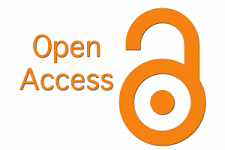The design of professional qualification model for the tourism marketing with the goal for sustainable development
Keywords:
Vocational rehabilitation,, Tourism Marketing, Tourism industryAbstract
Background and purpose summary: Considering the lack of theoretical studies in the field of what is the competence of tourism marketing professions, in this article, a reflective and future-research study on the competence of tourism marketing professions with a view on sustainable development has been discussed. Methodology: The required data were collected from two parts of the research literature in order to identify the indicators of professional competence (marketing) of tourism, as well as the opinions of 9 senior managers of government organizations and reputable tourism companies to identify the local structure of the indicators. In order to identify the indicators, the inductive content analysis tool was used, and in order to present the native model, the theme analysis tool was used in the Max QDA software.
References
- Akhoondnejad, A. (2017). Tourist loyalty to a local cultural event: The case of Turkmen
handicrafts festival. Tourism Management, 52, 468-477.
- Alexakis, G., & Jiang, L. (2019). Industry competencies and the optimal hospitality management
curriculum: an empirical study. Journal of Hospitality & Tourism Education, 31(4), 210-220.
- Berbekova, A., Uysal, M., & Assaf, A. G. (2021). A thematic analysis of crisis management in
tourism: A theoretical perspective. Tourism Management, 86, 104342.
-Braun, V., & Clarke, V. (2006). Using thematic analysis in psychology. Qualitative research in
psychology, 3(2), 77-101.
-Bushehri Sangi Rad, B., & Bahreinizad, M., (2019). Presenting a local model of loyalty to a
tourist destination with a qualitative approach based on foundation data: Bushehr port as a tourist
destination. scientific quarterly of tourism management studies. 17(45), 193-220. (In Persian)
-Fiorentino, D. (2018). The impact of successful cross-competencies on a career in tourism in
Italy: the meeting point between the students’ perceptions and the requirements for professionals.
Journal of Teaching in Travel & Tourism, 18(3), 179-201.
-Cecil, A., & Krohn, B. (2012). The process of developing a competency-based academic
curriculum in tourism management. Journal of Teaching in Travel & Tourism, 12(2), 129-145
-Chens, C. Y., Sok, P., & Sok, K. (2008). Evaluating the competitiveness of the tourism industry in
Cambodia: Self-assessment from professionals. Asia Pacific Journal of Tourism Research, 13(1),
-66.
-Chiu, W., Zeng, S., & Cheng, P. S. T. (2016). The influence of destination image and tourist
satisfaction on tourist loyalty: a case study of Chinese tourists in Korea. International Journal of
Culture, Tourism and Hospitality Research, 10(2), 223-234.
-Gough, D., Sandy, O. & Thomas, J., (2018). An introduction to systematic review. Translators:
Adel Azar and Saeed Jahanian, Tarbiat Modares University Publications. (In Persian)
-Harwood, T. G., & Garry, T. (2003). An overview of content analysis. The marketing review,
(4), 479-498.
-Hwang, J., & Lee, J. (2019). Relationships among senior tourists’ perceptions of tour guides’
professional competencies, rapport, satisfaction with the guide service, tour satisfaction, and word
of mouth. Journal of Travel Research, 58(8), 1331-1346.
-Jahanbin, R., & Zarei, R., (2012). Investigating and recognizing tourism development
strategies, a case study of Dereshahr city: Farhang Ilam. 38-39. (In Persian)
-Kim, N., Park, J., & Choi, J. J. (2017). Perceptual differences in core competencies between
tourism industry practitioners and students using Analytic Hierarchy Process (AHP). Journal of
hospitality, leisure, sport & tourism education, 20, 76- 86
-Kim, P. B., Lee, G., & Jang, J. (2017). Employee empowerment and its contextual determinants
and outcome for service workers: A cross-national study. Management Decision, 55(5), 1024-1045.
-Kumar, M. (2007). Mixed methodology research design in educational technology. Alberta
Journal of Educational Research, 53(1). Lin, Y. C.,
-Lin, M. L., & Chen, Y. C. (2017). How tour guides’ professional competencies influence on
service quality of tour guiding and tourist satisfaction: An exploratory research. International
Journal of Human Resource Studies, 7(1), 1-19.
-Millar, M., Mao, Z., & Moreo, P. (2010). Hospitality & tourism educators vs. the industry: A
competency assessment. Journal of Hospitality & Tourism Education, 22(2), 38-50.
-Nowell, L. S., Norris, J. M., White, D. E., & Moules, N. J. (2017). Thematic analysis: Striving to
meet the trustworthiness criteria. International journal of qualitative methods, 16(1),
-Okoli, C., & Schabram, K. (2010). A guide to conducting a systematic literature review of
information systems research.
- Pourjahan1 S., Mohajer B.& Kuhzady S.,(2022). Creative Tourism Planning Theory
Framework: ASystematic Review. Journal of Tourism Planning and Development,11(41),103-121.
-Rasoolimanesh, S. M., Md Noor, S., Schuberth, F., & Jaafar, M. (2020). Investigating the
effects of tourist engagement on satisfaction and loyalty. The Service Industries Journal, 39(7-8),
-574.
-Rather, R. A., Hollebeek, L. D., & Islam, J. U. (2019). Tourism-based customer engagement:
the construct, antecedents, and consequences. The Service Industries Journal, 39(7-8), 519-540.
-San Martín, H., Herrero, A., & García de los Salmones, M. D. M. (2019). An integrative model
of destination brand equity and tourist satisfaction. Current issues in tourism, 22(16), 1992-2013.
-Shirmohammadi, Y. , Mohammadi, A., The effect of augmented reality marketing on the
behavior and experiences of tourists duringthe Quaid 19 epidemic (case study of the virtualtour
application of the National Museum of Iran). Journal of Tourism Planning and
Development,11(41,171-200)
-So, K. K. F., King, C., Sparks, B. A., & Wang, Y. (2017). The role of customer engagement in
building consumer loyalty to tourism brands. Journal of Travel Research, 55(1), 64–78.
-Tabrizi, N. , jafarpishe, M.(2022). Biophilic Approach in Urban Tourism (Case study:Isfahan
City). Journal of Tourism Planning and Development,11(41),123-147.
Viccy; H., & Mehmandost; Kh., (2014). Investigating the obstacles to the development of the
international tourism industry in Iran with an emphasis on inbound tourism. Geopolitics
Quarterly. 11(1): 156-135. (In Persian)
Downloads
Published
How to Cite
Issue
Section
License

This work is licensed under a Creative Commons Attribution-NonCommercial 4.0 International License.
You are free to:
- Share — copy and redistribute the material in any medium or format
- Adapt — remix, transform, and build upon the material
- The licensor cannot revoke these freedoms as long as you follow the license terms.
Under the following terms:
- Attribution — You must give appropriate credit , provide a link to the license, and indicate if changes were made . You may do so in any reasonable manner, but not in any way that suggests the licensor endorses you or your use.
- NonCommercial — You may not use the material for commercial purposes .
- No additional restrictions — You may not apply legal terms or technological measures that legally restrict others from doing anything the license permits








